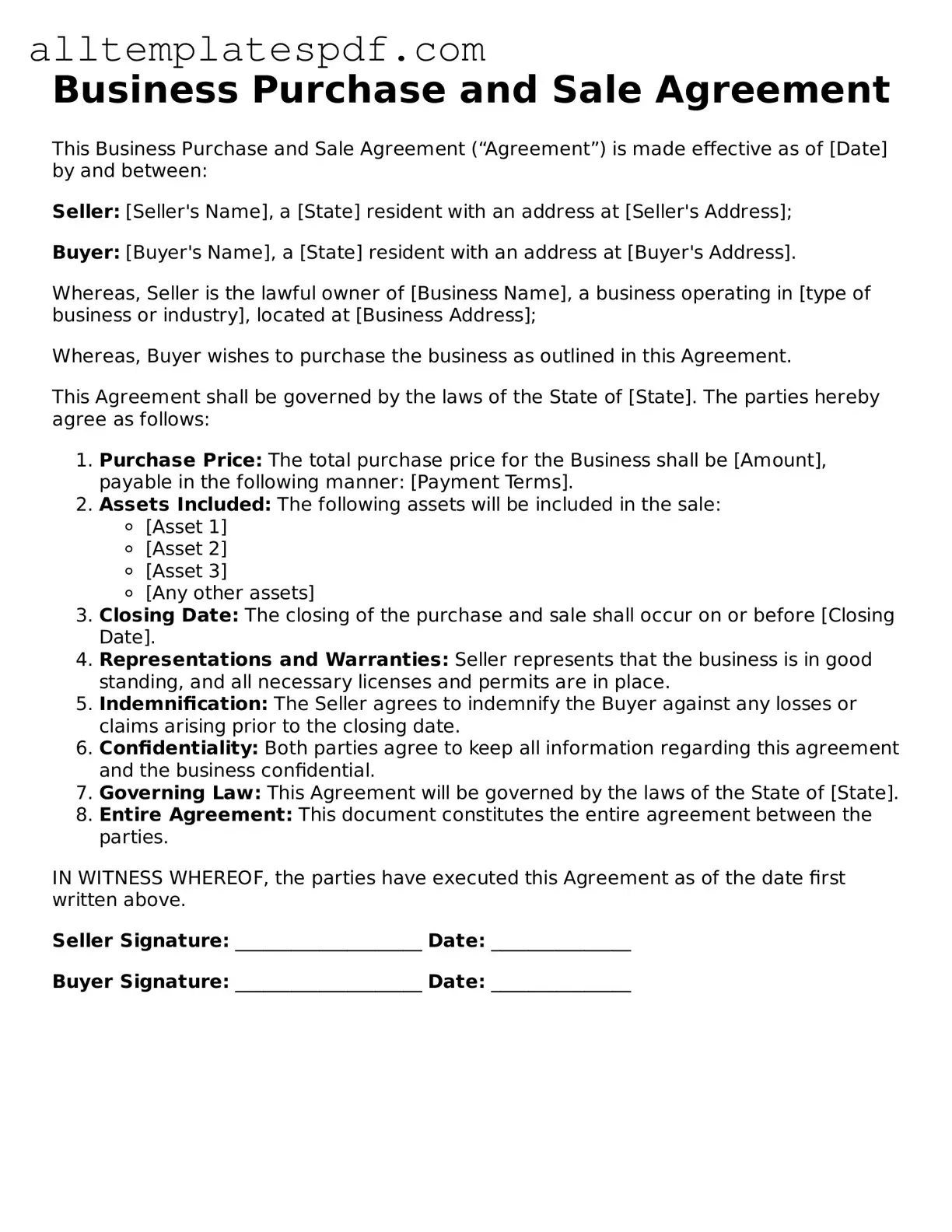When completing a Business Purchase and Sale Agreement, individuals often make critical mistakes that can lead to complications down the line. One common error is failing to accurately describe the assets being sold. This includes not specifying which assets are included in the sale, such as equipment, inventory, or intellectual property. An unclear description can result in disputes or misunderstandings between the buyer and seller.
Another frequent mistake involves neglecting to include all necessary terms and conditions. Buyers and sellers sometimes overlook essential details such as payment terms, closing dates, and contingencies. Without these specifics, the agreement may lack clarity, leading to potential conflicts or even legal challenges in the future.
Additionally, individuals may forget to verify the legal status of the business being sold. Ensuring that the business is properly registered and in good standing is crucial. Failing to do so can result in unexpected liabilities for the buyer or complications in the transfer of ownership.
Moreover, many people do not seek professional advice when drafting the agreement. Relying solely on templates or online resources can be risky. Each business transaction is unique, and having legal counsel can help identify potential issues and ensure that all legal requirements are met.
Lastly, some individuals may overlook the importance of signatures and dates. An agreement without proper signatures or missing dates can be deemed invalid. Ensuring that all parties have signed the document and that it is dated appropriately is essential for the enforceability of the agreement.
